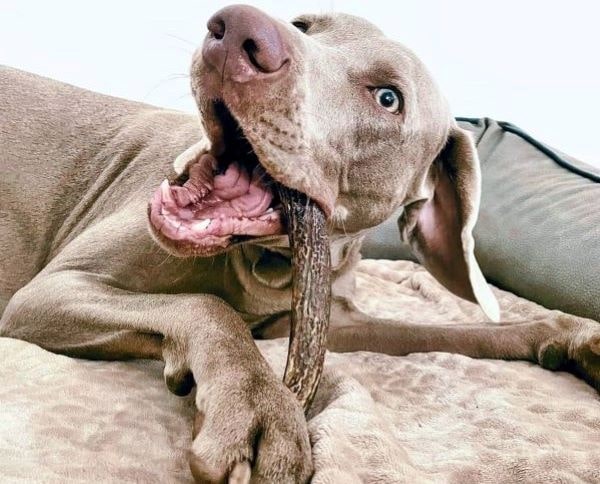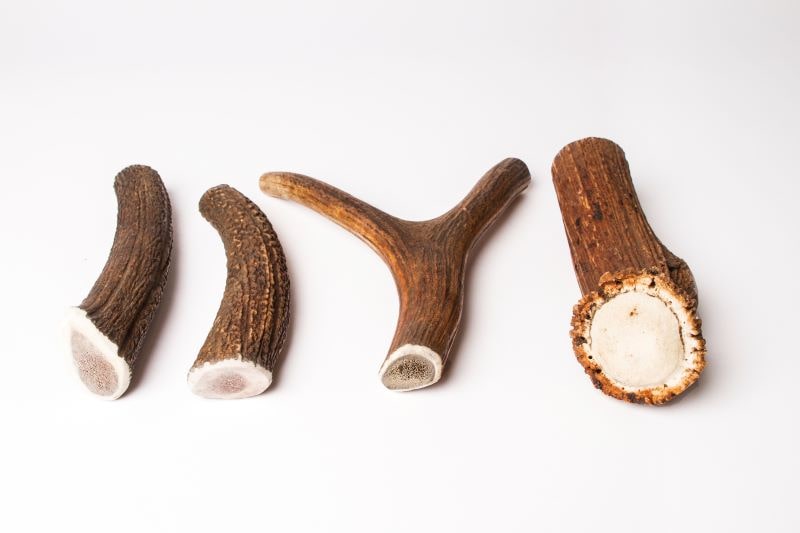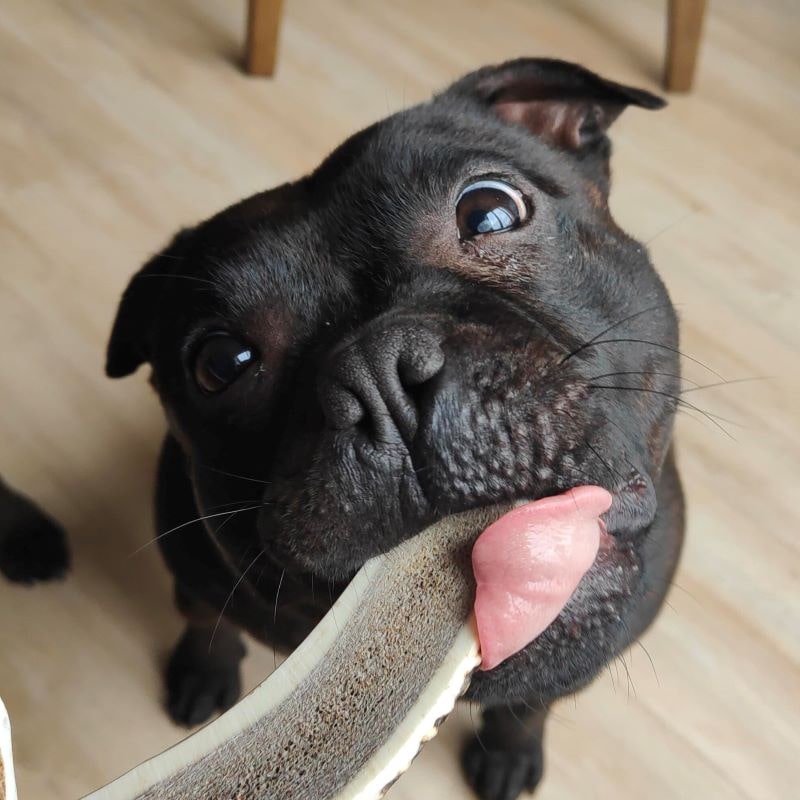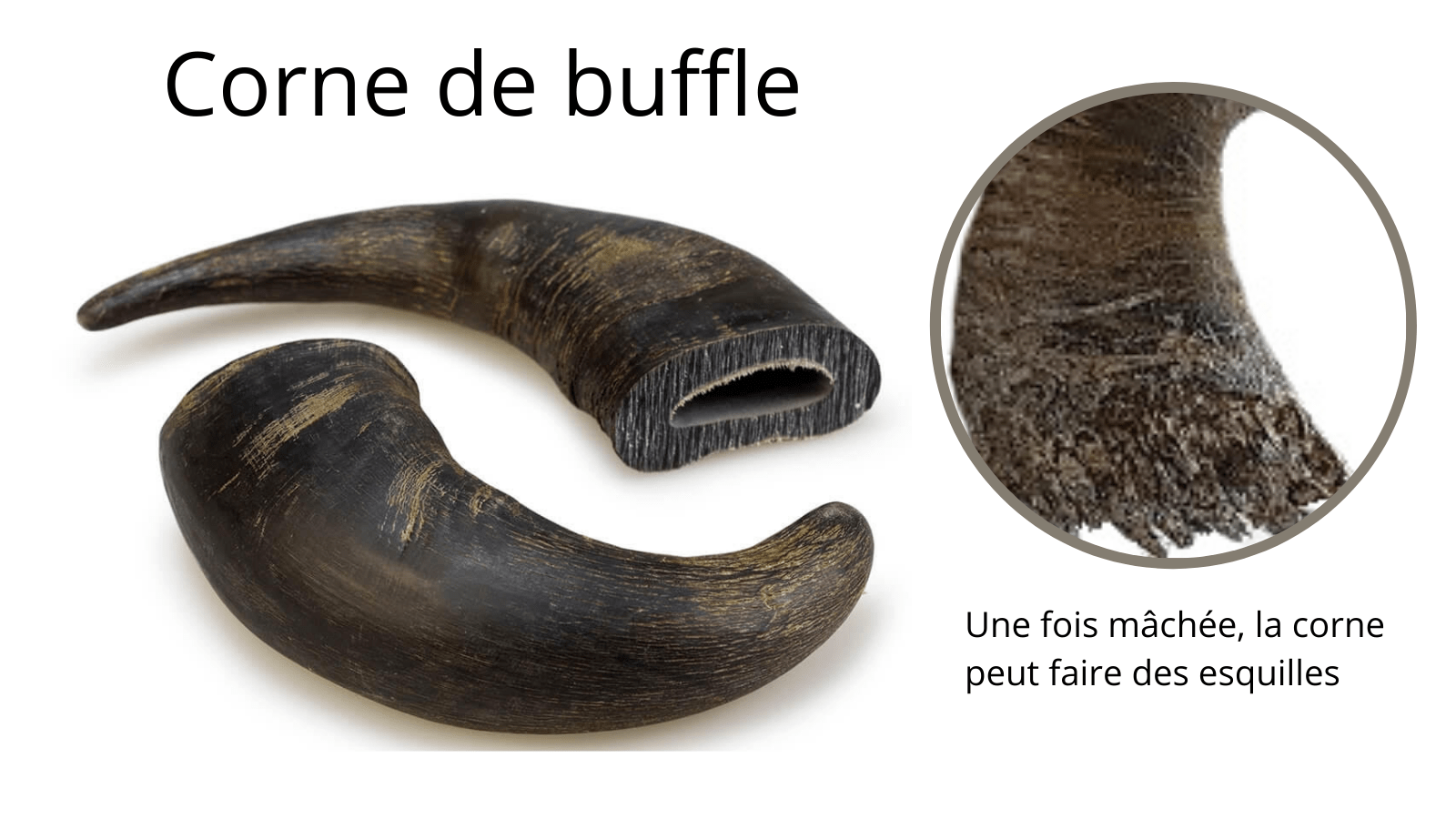IS DEER ANTLER DANGEROUS FOR MY DOG?
Are you looking for a chewing solution that is tough but not dangerous for your dog?
You've heard about deer antler chews for dogs, but you're apprehensive about giving them to your pooch.
Is it suitable for my dog? What are the health benefits for my dog and how to choose the right deer antler? We'll tell you everything!
WHAT ARE THE DANGERS OF DEER ANTLER?
Asking whether deer antler is dangerous for dogs is like asking whether a peanut is dangerous for all humans.
Peanuts are dangerous for people with allergies, but peanuts are a real treat for peanut lovers.
The same goes for deer antlers, which become dangerous if given to a dog in an inappropriate manner.
IS DEER ANTLER TOO STRONG OR VERY STRONG FOR MY DOG?
Very robust, deer antlers give destructive dogs a hard time, as nothing can resist them for more than two minutes.
It makes their owners happy, as they finally find a natural product that stands the test of time.
Whole deer antler, very robust for a dog that loves to chew, becomes too robust for dogs with little endurance for chewing or more fragile teeth.

The strength of deer antler is no longer in doubt, it does not break into pieces , but to taste the dry marrow in the center, the dog must sit down, hold it and chew it for a long time. It is the friction of the tooth against the antler that allows the calcium layer to be "sanded" and the diameter of the antler to be reduced to gradually reach the heart of the antler , where the Holy Grail is found, the delicious dry marrow.
But some dogs simply don't know how to chew , meaning they don't make the effort to release the pressure when chewing something very tough.
Giving a deer antler to a "crusher" dog , who does not know how to chew and tries to break everything he finds, is taking the risk that the dog will break a tooth .
This dog will break and file his teeth on anything he finds strong enough in his eyes: a stone, an iron bar or a deer antler if you give him one.
These cases remain quite rare and be aware that deer antler is sold in different shapes and cuts to reduce resistance and offer a natural, durable and risk-free chewing solution for your dog whatever its size, age or temperament.
Deer antler is no more dangerous than anything else,
it is just not suited to the temperament of these dogs.
But rest assured, nature is well made!
It offers a wide range of natural chewable solutions of varying strengths such as deer antler which offers a softer alternative to deer antler.
Choosing the right deer antler
Chewing deer antler is a sporting activity that requires real physical effort from your dog.
We are not all equal when it comes to sport, and the same goes for dogs.
Ask a young weightlifter to lift the world record bar. While they may love the sport and be competitive, their abilities still aren't up to the task. The same goes for the deer antler.
It is best to start with a sliced deer antler to introduce this new generation of chew bones, give easy access to dry marrow and gradually increase the difficulty . Your dog will know the smell and taste of marrow and will make the effort if you increase the difficulty.
.jpg)

While it is essential to choose the right antler for your dog, it is just as important to choose the right size of antler.
It is important to keep in mind that in order to chew it, your dog must be able to hold it and rub its teeth with a certain amplitude.
If you give a Rottweiler a 10cm deer antler, he won't be able to hold it!
Conversely, if you give an XXL deer antler to a Chihuahua, it will be impossible for him to put it in his jaw and chew it, he will never have access to the marrow and you will only be able to display the deer antler as decoration!
The variety of shapes also allows for Y- or V-shaped pieces, which is called branching. These shapes allow for easier maintenance, ideal for dogs with osteoarthritis, for example.
Is deer antler dangerous for my puppy?

Just like with children, your puppy will need to relieve the pain of teething and will try to chew on everything he can find.
Cut on an angle, deer antler is THE solution to help your puppy relieve dental pain . With the marrow completely accessible without any chewing effort , your puppy will be able to cut his teeth and stock up on calcium, minerals and natural nutrients essential to strengthen his adult teeth.
Once he has lost his baby teeth (around 4-5 months depending on the breed), you can give your young dog a sliced deer antler and then a whole deer antler if you feel that your dog needs to let off steam on more robust chew bones.
Buffalo horn: cheaper than deer antler, but...
Deer antler is often clumsily referred to as deer horn instead of deer antler. But this misnomer frequently leads to confusion between deer horn and buffalo horn, when in fact they are two completely different products.
Horn or wood, is it the same thing?
The answer is No!

While the process of harvesting antlers or horns remains the most important element in the eyes of those concerned about the treatment of animals, there are many differences between deer antler and buffalo horn...
La corne de buffle provient d’animaux d’élevage et plus précisément de buffles d’eau d’élevage en provenance d’Inde généralement sur lesquels on récupère la corne qui rappelons-le ne tombe pas naturellement à la différence du bois de cerf dont la pousse et repousse sont rythmées par la nature et le processus naturel de mue annuelle.
| BOIS DE CERF | CORNE DE BUFFLE |
| SAUVAGE Si bois de qualité A |
ÉLEVAGE |
Si la résistance de la corne de buffle est souvent comparée à celle du bois de cerf, la corne de buffle est bien moins chère que le bois de cerf (du simple au double !) mais cette différence de tarifs s’explique aussi par son origine.
| BOIS DE CERF | CORNE DE BUFFLE |
| NE CASSE PAS | PEUT FAIRE DES ESQUILLES ( Aiguilles tranchantes ) |
La corne de buffle provient d’animaux d’élevage et plus précisément de buffles d’eau d’élevage en provenance d’Inde généralement sur lesquels on récupère la corne qui rappelons-le ne tombe pas naturellement à la différence du bois de cerf dont la pousse et repousse sont rythmées par la nature et le processus naturel de mue annuelle.
Aucun cerf n’est blessé ou tué pour ses bois puisqu’ils tombent naturellement chaque année.
| BOIS DE CERF | CORNE DE BUFFLE |
| EUROPE | INDE |
C’est bien là l’une des différences majeures entre le bois de cerf qui tombe naturellement chaque année et la corne de buffle qui pousse tout au long de la vie de l’animal et qui doit être coupée sur des animaux morts pour être récupérée.
| BOIS DE CERF | CORNE DE BUFFLE |
| TOMBE NATURELLEMENT | COUPE SUR ANIMAUX MORTS |
| BOIS DE CERF | CORNE DE BUFFLE |
| POUSSE ET TOMBE NATURELLEMENT TOUS LES ANS | CROISSANCE CONTINUE TOUT AU LONG DE LA VIE DE L'ANIMAL |
| BOIS DE CERF | CORNE DE BUFFLE |
| OS Calcium | KÉRATINE Comme les ongles chez l'humain |
| BOIS DE CERF | CORNE DE BUFFLE |
| MOELLE SÈCHE au centre du bois | CORNE CREUSE |
| BOIS DE CERF | CORNE DE BUFFLE |
| SANS ODEUR | ODEUR FORTE une fois mâchée |
